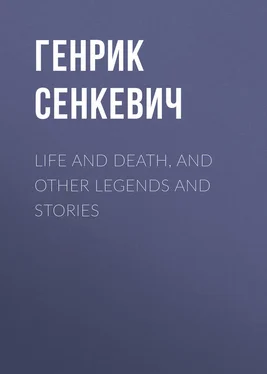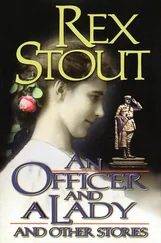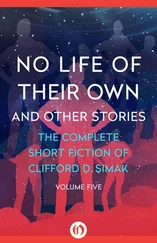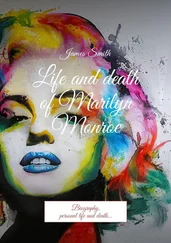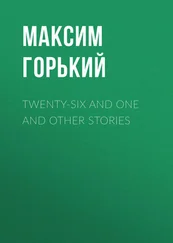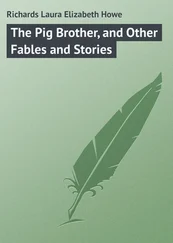Генрик Сенкевич - Life and Death, and Other Legends and Stories
Здесь есть возможность читать онлайн «Генрик Сенкевич - Life and Death, and Other Legends and Stories» — ознакомительный отрывок электронной книги совершенно бесплатно, а после прочтения отрывка купить полную версию. В некоторых случаях можно слушать аудио, скачать через торрент в формате fb2 и присутствует краткое содержание. Жанр: foreign_antique, foreign_prose, на английском языке. Описание произведения, (предисловие) а так же отзывы посетителей доступны на портале библиотеки ЛибКат.
- Название:Life and Death, and Other Legends and Stories
- Автор:
- Жанр:
- Год:неизвестен
- ISBN:нет данных
- Рейтинг книги:5 / 5. Голосов: 1
-
Избранное:Добавить в избранное
- Отзывы:
-
Ваша оценка:
- 100
- 1
- 2
- 3
- 4
- 5
Life and Death, and Other Legends and Stories: краткое содержание, описание и аннотация
Предлагаем к чтению аннотацию, описание, краткое содержание или предисловие (зависит от того, что написал сам автор книги «Life and Death, and Other Legends and Stories»). Если вы не нашли необходимую информацию о книге — напишите в комментариях, мы постараемся отыскать её.
Life and Death, and Other Legends and Stories — читать онлайн ознакомительный отрывок
Ниже представлен текст книги, разбитый по страницам. Система сохранения места последней прочитанной страницы, позволяет с удобством читать онлайн бесплатно книгу «Life and Death, and Other Legends and Stories», без необходимости каждый раз заново искать на чём Вы остановились. Поставьте закладку, и сможете в любой момент перейти на страницу, на которой закончили чтение.
Интервал:
Закладка:
Henryk Sienkiewicz
Life and Death, and Other Legends and Stories
“Is He the Dearest One?” was produced under the following circumstances: About fourteen years ago there was a famine, or at least hunger, in Silesia. Though that land is a German possession at present, it was once a part of the Polish Commonwealth, and there are many un-Germanized Poles in it yet.
The mother in this sketch is Poland. Yasko, the most unfortunate of her sons, is Silesia. Poor, ill-fated, he neglects his own language, forgets his mother; but she does not forget him, as was shown on the occasion of that hunger in Silesia. The Poles of Russian Poland collected one million marks and sent them to Yasko.
The ship “Purple” represents Poland and its career, and is a very brief summary of the essence and meaning of Polish history. Like some of the author’s most beautiful short productions, it was written for a benevolent object, all the money obtained for it being devoted to that object.
All persons who have read “Charcoal Sketches,” in Sienkiewicz’s “Hania,” will be interested to learn the origin of that striking production. It was written mainly and finished in Los Angeles, Cal., as Sienkiewicz told me in Switzerland six years ago, but it was begun at Anaheim Landing, as is described in the sketch printed in this volume, “The Cranes.” Besides being begun at Anaheim Landing, the whole plan of “Charcoal Sketches” was worked out there. “The Cranes” appeared in Lvov, or Lemburg, a few years ago, in a paper which was published for one day only, and was made up of contributions from Polish authors who gave these contributions for a benevolent purpose. The Hindu legend, “Life and Death,” to be read by Sienkiewicz at Warsaw in January, is his latest work.
JEREMIAH CURTIN.Torbole, Lago di Garda, Austria,
December 18, 1903.
LIFE AND DEATH
A HINDU LEGEND
There were two regions lying side by side, as it were two immense plains, with a clear river flowing between them.
At one point the banks of this river sloped gently to a shallow ford in the shape of a pond with transparent, calm water.
Beneath the azure surface of this ford could be seen its golden bed, from which grew stems of lotus; on those stems bloomed white and rose-colored flowers above the mirror of water. Rainbow-hued insects and butterflies circled around the flowers and among the palms of the shore, while higher up in the sunny air birds gave out sounds like those of silver bells. This pond was the passage from one region to the other.
The first region was called the Plain of Life, the second the Plain of Death.
The supreme and all mighty Brahma had created both plains, and had commanded the good Vishnu to rule in the Region of Life, while the wise Siva was lord in the Region of Death.
“Do what ye understand to be best,” said Brahma to the two rulers.
Hence in the region belonging to Vishnu life moved with all its activity. The sun rose and set; day followed night, and night followed day; the sea rose and fell; in the sky appeared clouds big with rain; the earth was soon covered with forests, and crowded with beasts, birds, and people.
So that all living creatures might increase greatly and multiply, the kindly god created Love, which he made to be Happiness also.
After this Brahma summoned Vishnu and said to him:
“Thou canst produce nothing better on earth, and since heaven is created already by me, do thou rest and let those whom thou callest people weave the thread of life for themselves unassisted.”
Vishnu obeyed this command, and henceforward men ordered their own lives. From their good thoughts came joy, from their evil ones, sorrow; and they saw soon with wonder that life was not an unbroken rejoicing, but that with the life thread which Brahma had mentioned they wove out two webs as it were with two faces, – on one of these was a smile; there were tears in the eyes of the other.
They went then to the throne of Vishnu and made complaint to him:
“O Lord! life is grievous through sorrow.”
“Let Love give you happiness,” said Vishnu in answer.
At these words they went away quieted, for Love indeed scattered their sorrows, which, in view of the happiness given, seemed so insignificant as to be undeserving of notice.
But Love is also the mighty mother of life, hence, though the region which Vishnu ruled was enormous, it was soon insufficient for the myriads of people; soon there was not fruit enough upon trees there, nor berries enough upon bushes, nor honey enough from cliff bees.
Thereupon all the men who were wisest fell to cutting down forests for the clearing of land, for the sowing of seed, for the winning of harvests.
Thus Labor appeared among people. Soon all had to turn to it, and labor became not merely the basis of life, but life itself very nearly.
But from Labor came Toil, and Toil produced Weariness.
Great throngs of people appeared before Vishnu a second time.
“O Lord!” exclaimed they, stretching their hands to him, “toil has weakened our bodies, weariness spreads through our bones, we are yearning for rest, but Life drives us always to labor.”
To this Vishnu answered:
“The great and all mighty Brahma has not allowed me to shape Life any further, but I am free to make that which will cause it to halt, and rest will come then to you.”
And Vishnu made Sleep.
Men received this new gift with rejoicing, and very soon saw in it one of the greatest boons given by the deity thus far. In sleep vanished care and vexation, during sleep strength returned to the weary; sleep, like a cherishing mother, wiped away tears of sorrow and surrounded the heads of the slumbering with oblivion.
So people glorified sleep, and repeated:
“Be blessed, for thou art far better than life in our waking hours.”
And they had one regret only, that it did not continue forever. After sleep came awakening, and after awakening came labor with fresh toil and weariness.
This thought began soon to torture all men so sorely, that for the third time they stood before Vishnu.
“O Lord,” said they, “thou hast given us a boon which, though great and unspeakably precious, is incomplete as it now appears. Wilt thou grant us that sleep be eternal?”
Vishnu wrinkled his brows then in anger at this their insistence, and answered:
“I cannot give what ye ask of me, but go to the neighboring ford, and beyond ye will find that for which ye are seeking.”
The people heard the god’s voice and went on in legions immediately. They went to the ford, and, halting there, gazed at the shore lying opposite.
Beyond the clear, calm, and flower-bedecked surface stretched the Plain of Death, or the Kingdom of Siva.
The sun never rose and never set in that region; there was no day and no night there, but the whole plain was of a lily-colored, absolute clearness. No shadow fell in that region, for clearness inhered there so thoroughly that it seemed the real essence of Siva’s dominions.
The region was not empty. As far as the eye could reach were seen heights and valleys where beautiful trees stood in groups; on those trees rose climbing plants, while ivy and grapevines were hanging from the cliff sides.
But the cliffs and the tree trunks and the slender plant stems were almost transparent, as if formed out of light grown material. The leaves of the ivy had in them a delicate roseate light as of dawn. And all was in marvellous rest, such as none on the Plain of Life had experienced; all was as if sunk in serene meditation, as if dreaming and resting in continuous slumber, unthreatened by waking.
Читать дальшеИнтервал:
Закладка:
Похожие книги на «Life and Death, and Other Legends and Stories»
Представляем Вашему вниманию похожие книги на «Life and Death, and Other Legends and Stories» списком для выбора. Мы отобрали схожую по названию и смыслу литературу в надежде предоставить читателям больше вариантов отыскать новые, интересные, ещё непрочитанные произведения.
Обсуждение, отзывы о книге «Life and Death, and Other Legends and Stories» и просто собственные мнения читателей. Оставьте ваши комментарии, напишите, что Вы думаете о произведении, его смысле или главных героях. Укажите что конкретно понравилось, а что нет, и почему Вы так считаете.
